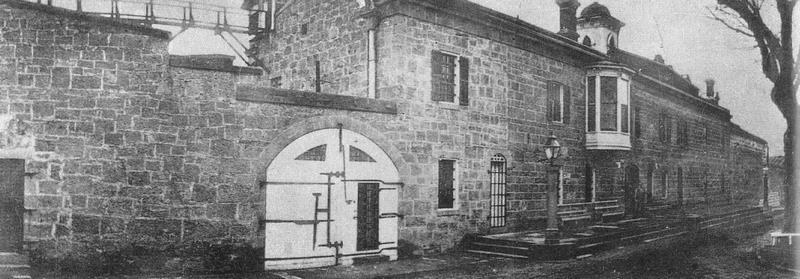
Volney Rollins checked his sidearm and buttoned his coat against a cold draft as he walked down the concrete hallway toward the dining area. His last duty was to secure the prisoners. It had been a long day, and he just wanted to sit in front of a fire with his family.
I’ll lock ‘em up for the night, and I’m out of here. It was the last thought he remembered from that day.
A Long Awaited Book
|
Some three dozen inmates were assembled in the dining hall, the conspirators among them milling about as nervous as wild horses before a thunderstorm. It had come time for Rollins, the captain of the guard, to get them back into their cells. As he unlocked and opened the iron door, a bottle swung by John Squiers smashed into the top of his head, and a slungshot hit him above the left eye, slashing his forehead to the bone. Several prisoners rushed him wildly as he sank to the floor. One grabbed his sidearm and others were about to assault him again, but just as they reached him, Pat Hurley, a small, dark Irishman serving five years for an Ormsby County robbery, made his way through the mob, pulled the guard by his coat collar and hair into a cell, and slammed the door. Rollins slept through the ensuing battle, owing his life to a little man who, judging by the tattoo of a vase of flowers on his forearm, had a soft spot in his heart.
Thus began the largest prison break in the history of the country. It happened on September 17, 1871, a bleak Sunday evening when strong winds sweeping off the western mountains had cast a dirty, blinding pall over the valley. The bitter-cold winds were harbingers of an early winter. The prison wasn’t a pleasant place for even the most hardened of men to spend a winter, and talk of the coming cold was a dreadful refrain among the inmates.
The prisoners had armed themselves with a variety of crude weapons, including reinforcement bars and knives of their own making. Some carried slungshots made of rocks of hunks of metal sewn into socks and tied to their wrists.
A hole had been cut in the ceiling and several men were waiting in the crawl space. When Squiers rapped on the ceiling from below, they moved quickly to a point above the warden’s quarters. Frank Clifford was in front. They were after the keys to the armory and the gates, and it didn’t matter who stood in their way.
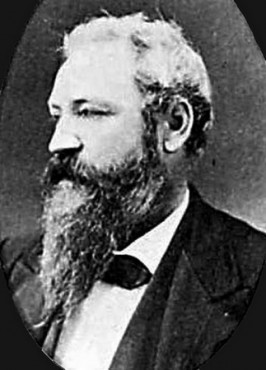
Frank Denver, the lieutenant governor, was the warden. Denver’s wife, his six-year-old daughter Jennie, and his mother-in-law were having supper in the dining room of the warden’s quarters. They were aghast as a sledgehammer broke through the ceiling and men in convict garb dropped into the room. Denver, who heard the ruckus from downstairs, appeared with his pistol drawn, but he was immediately overwhelmed and struck a vicious blow to the back of the head. As he pitched forward, a slungshot opened a three-inch gash in his forehead; blood blinded him as he sank to the floor. A prisoner grabbed his pistol and shot him in the midsection.
Bob Deadman, a trustee serving life for a Virginia City murder, had followed Denver up the stairs. He grabbed a chair and went hell-bent after the prisoners. Newspapers reported that Deadman managed to knock five men to the floor and another “over the balustrading and down the stairs” before he was knocked senseless and left for dead.
The break had been timed perfectly. The guard shift was reduced on Sundays, and most of the few guards on duty were doing checks on the outer reaches of the property before nightfall.
The mob left the two women and the little girl unharmed as Clifford led the charge downstairs to the armory. Initial accounts said the convicts helped themselves to two Henry rifles, four double-barreled shotguns, five six-shooters, and over two thousand rounds of ammunition. In fact, more weapons were seized, both from the armory and, later, from downed guards.
Thomas Ryan, a scarred, red-headed Irishman sent up from Lander County for burglary and escape, had the job of checking the weapons records in Denver’s office. He noticed a Henry rifle was missing. A newspaper account stated that when Ryan shouted upstairs to ask where the rifle was, Denver appeared on the balcony, six-shooter in hand, daring Ryan to come and get it. The story was false. Denver has lying in his living room, shot through the gut and bleeding profusely from a head wound. Ryan found the rifle under a coat in the office.
Heavily armed prisoners burst out of the cell block and headed for the gates. In the yard, F.M. Isaacs, a guard from Gold Hill, confronted them and fired away with a pistol. A description of Isaac’s bravery that day is reminiscent of the flowery prose in correspondents’ reports of the heroics of General George Armstrong Custer. Custer would die five years later at Little Big Horn at the hands of Indians led by the great chiefs Sitting Bull and Crazy Horse:
“Isaacs stood like stone column, firing steadily into the motley crowd and receiving volley after volley with the coolest indifference. A ball passed through his right knee, breaking it, and lodged in the rear of the left knee. At this Isaacs straightened himself up, threw the weight of his body on the left and only unbroken leg, and fired again. By this time the armed desperadoes at whom he was firing were almost within striking distance of him, were steadily approaching and as steadily firing at him with 6-shooters. Another shot hit the heroic Isaacs in the arm and sent him to earth. The prisoners seized his pistol, but out of sheer admiration for his heroic courage spared his life.”
Isaacs was a brave man and as heroic as anyone involved in the affray. But it’s unlikely he was spared out of admiration for his courage. He was down with grave wounds, having been shot in the hip as well as the knees, and was unable to rise to protect himself. Disarmed, he was not a threat, and the fleeing escapees paid no mind to him.
As Isaacs was facing mortal danger, convict William Russell, a burglar from Storey County, was looking for a target. He spotted Mrs. Denver peering through curtains from the second story parlor of the warden’s quarters. She was looking for her daughter, who had disappeared. It was reported that the ball Russell fired passed within inches of the woman’s head, between her and a “gentleman visitor” who stood with her watching the conflict. The “gentleman” must have been her mother, since Denver and Deadman, the trustee, were down, and there were no other men in the warden’s quarters.
Guard John Newhouse burst into the yard just as his friend Isaacs went down. He told investigators he thought his first shot had seriously wounded train robber E.B. Parsons. He was rendered senseless by a slungshot blow to the back of the head before he could get off more rounds.
An unarmed Slovakian prison guard from Carson City named Perasich heard the sounds of battle and raced to the nearby Warm Springs Hotel, a favorite watering hole of the guards. He grabbed a five-shooter from behind the bar, rushed back to the entry to the prison yard, and began firing. He reported later he was certain that at least three shots took effect, as he saw men “squirm and stagger.” Within a minute, he was shot in the left hip, the ball deflecting down through the groin and lodging between the femoral artery and thigh bone. Had the ball struck the artery, Perasich, who survived his wounds, would have been dead in short order.
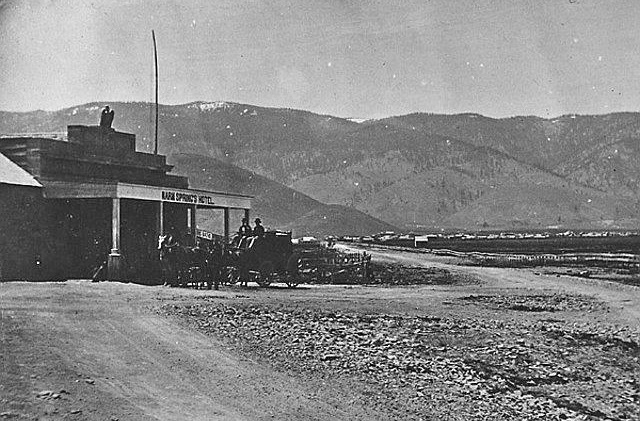
Matthew Pixley, the proprietor of the hotel, armed himself and ran after Perasich. Prisoners were in the guard room firing into the yard at Newhouse and Perasich. Pixley rushed pell-mell up to a window and raised his pistol to fire. Charlie Jones, a ringleader of the escape, whirled and fired a Henry rifle through the window. The bullet penetrated two panes of glass and struck Pixley below the eye. He was dead before he hit the ground, his blood and brains splattered along the wall and yard.
C.W. Burgesser, Pixley’s barkeep, grabbed a rifle and followed his boss headlong into the fray, meeting a hair-breadth escape with his life. The Daily Register reported that a “ball shaved close by each ear, and a third shot struck his pantaloons in the front of the crotch and tore away the whole seat of both pants and drawers.”
Newspapers had kind words for another “guard,” a little Frenchman whose name was not at first known, who “fought heroically to the last and escaped without a scratch.” It was said that he rushed through the crowd, dealing many telling blows “regardless of the shower of shots that whistled about him and cut his clothes to shreds.”
During the heat of the battle, the Frenchman noticed Warden Denver’s panicked daughter running through the yard. He “rushed out in the leaden storm, seized the little girl and started running with her along the prison building toward the west gate with the intention of putting her [out of harm’s way].” As he ran through a hail of gunfire with the girl, he saw a young woman “running toward the prison door, to reach which she would have to pass in front of four guns belching streams of fire from the windows. The gallant little Frenchman, having removed the child from danger, dropped her and seized the woman, thus saving her from instant death.”
The Frenchman then rushed back to the battle scene where he encountered C.W. Burgesser, the hotel bartender who had managed to fight on despite the loss of the rear end of his pantaloons. He yelled to Burgesser, “Here, barkeep, help me take this man out of danger.” With bullets plowing up the ground, the two men rushed the yard and carried the grievously wounded Isaacs to safety. The Frenchmann turned to return to the scene, but Burgesser grabbed his arm and convinced him that the prisoners, having seen what he had done, would surely kill him. He agreed and let Burgesser lock him in a room in the hotel.
It turned out that the Frenchman the newspapers identified as a guard was a convict himself, as Burgesser knew. His name was Edmond Goyette. He was serving a lengthy term for assault with intent to do great bodily harm during a brawl in Virginia City.
It was mayhem. The prisoners, some letting out Civil War battle cries, ran, stepped, pushed, and shoved over and around the fallen guards. Twenty-nine of them made it over the walls or through the gates and ran off in all directions, hell-bent on freedom.
A man in a buggy who heard the noise of the battle rushed back to Carson City’s main street and alerted authorities. Sheriff Swift and a dozen armed men immediately left for the prison but were too late to prevent the escape of any man who chanced a run for it.
It was reported that twenty-two of the escapees, marching two abreast, turned east toward the river. Like many exaggerated reports written in the next few days, that was not true. The men simply scattered. Several who headed toward the Sierras slipped through the outlying regions of Carson City without incident. One of them followed the Carson River upstream for miles. He was captured without incident two days later, basking in a pool at David Walley’s Hot Springs near Genoa in Douglas County. “A warm bath was all I wanted,” he explained.
A group of stragglers in prison garb was seen at dusk on a ridge across the Carson River, a few miles southeast of the prison. Lawmen said they would be captured before daylight.
The state militia headquartered in Virginia City was called out by the governor’s office; troops arrived by special train three hours later. The state armory was opened, and citizens were deputized and sent to the prison to guard against another escape attempt or an attack by the insurgents.
Victory in the battle went to the escapees. Frank Clifford, who suffered a flesh wound from a shot by Warden Denver in the first minutes of the battle, was the only injured convict. In light of the fact that dozens if not hundreds of rounds were fired by guards — and by Denver and Burgesser and Goyette — it’s remarkable that no other prisoners were injured.
Carson City’s Daily State Register and Virginia City’s Daily Territorial Enterprise carried identical account of the battle, with date-lines of September 19, 1871. The twenty-nine escapees were described as being “as desperate a gang of villains as ever faced the sun.”
Not a single escapee was captured the day of the escape. For weeks newspapers would condescendingly criticize the National Guard generals, the sheriffs, the warden and deputy warden, and the leaders of the newly formed militias. Much of the criticism was well founded, given that all came away empty-handed.
Reports days later were that prisoner Frank Clifford had been fatally wounded by Lieutenant Governor Denver in the warden’s quarters. Goyette thought he heard him say, “I’m dying,” as he left through the gate. Clifford’s wound, however, was inconsequential. There were equally erroneous reports that train robber E.B. Parsons had been badly wounded and that eight other prisoners had been shot.
A Daily State Register reporter who accompanied investigators described what he saw two days after the battle:
“At the prison, the scene was appalling, even yesterday morning, when everything was still as the grave. Blood — great splotches and pools of human gore — greeted the eye everywhere; along the porch of and in the hotel, on the main gateway, over the rubble stones of the inner walk, on the prison porch, door steps, window and door sills and facing, wall coating, walls, bolts, bars, beds, floors, stairs and even the little green shade trees and the green grass of the front yard were stained with blood. Everywhere marks of the heroic struggle of the few brave guards against overwhelming numbers of superiorly armed desperadoes were visible.” Buy the book



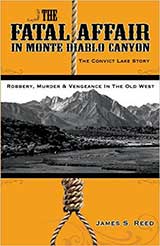 On September 17 1871, 29 prisoners broke out of the Nevada State Prison in Carson City and scattered into the night, leaving two dead and Nevada’s lieutenant governor badly wounded and disgraced. It was the largest prison break in American history, and the whole story has gone untold until now. McGill native Jim Reed has painstakingly researched and written this astonishing story in all its detail.
On September 17 1871, 29 prisoners broke out of the Nevada State Prison in Carson City and scattered into the night, leaving two dead and Nevada’s lieutenant governor badly wounded and disgraced. It was the largest prison break in American history, and the whole story has gone untold until now. McGill native Jim Reed has painstakingly researched and written this astonishing story in all its detail. 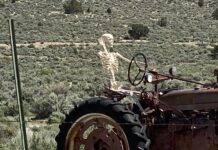
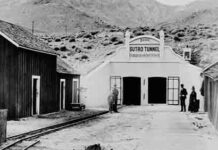

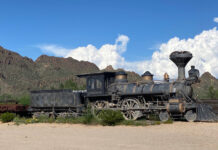

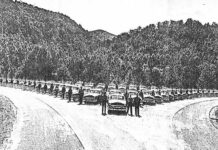






Legend has it that 27 of the escaped convicts, led by a lifer, the feral lawyer Fletcher Michael, made their way to Mound House where they holed up at the Moonbeam Specialty Ranch until the search was given up. They persuaded some of the ladies to accompany them up Gold Canyon to Devil’s Gate where they settled. Several generations of frenzied inbreeding produced the intellectual class of present day Silver City.